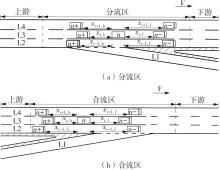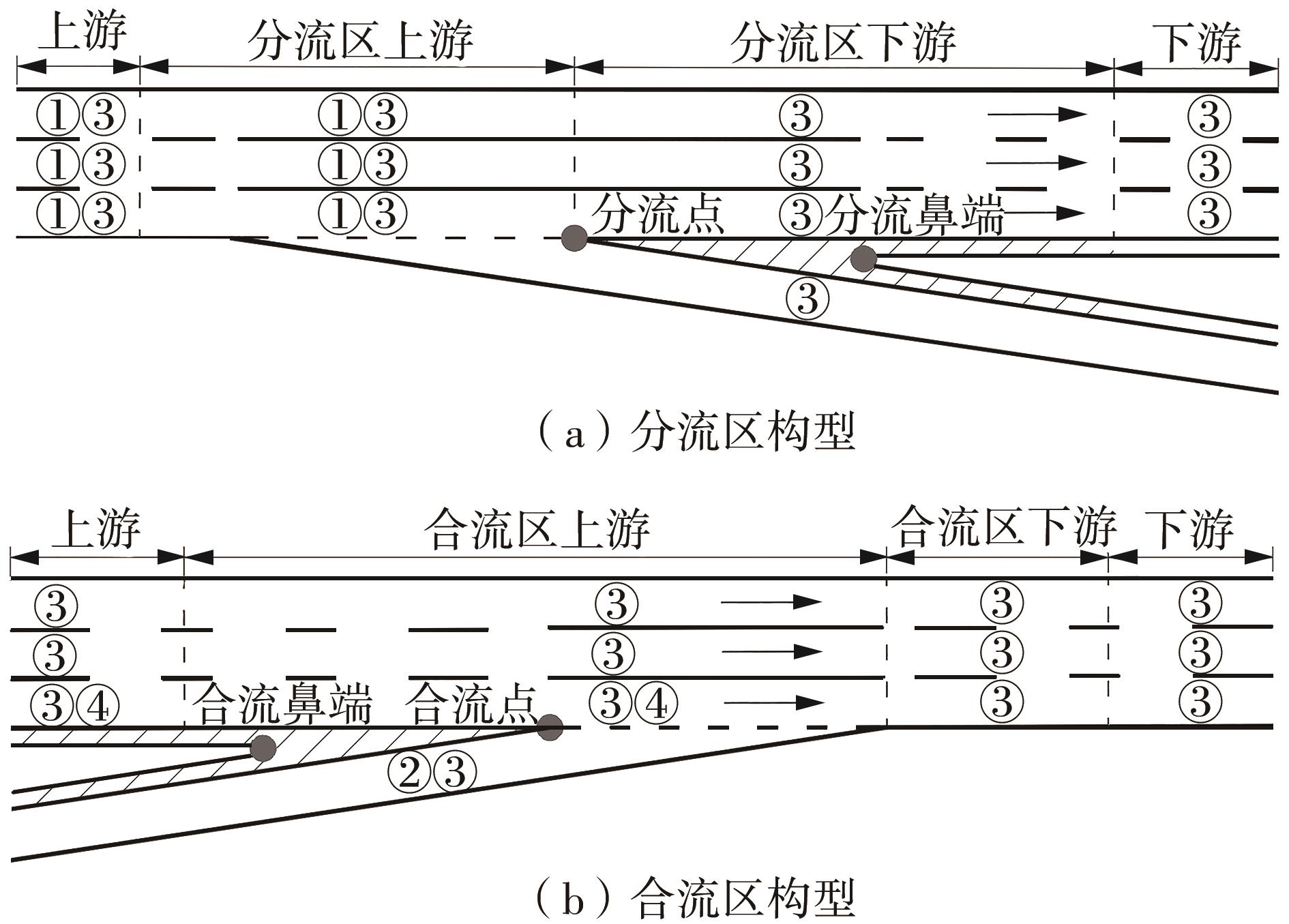华南理工大学学报(自然科学版) ›› 2022, Vol. 50 ›› Issue (10): 11-18.doi: 10.12141/j.issn.1000-565X.220008
所属专题: 2022年交通运输工程
高速公路分合流区车流元胞模型的构建及应用
漆巍巍1 马思维1 周南杰2
- 1.华南理工大学 土木与交通学院,广东 广州 510640
2.广州北环智能交通科技有限公司,广东 广州 510030
Construction and Application of Cellular Automaton Model of Traffic Flow in Freeway Diverging and Merging Areas
QI Weiwei1 MA Siwei1 ZHOU Nanjie2
- 1.School of Civil Engineering and Transportation,South China University of Technology,Guangzhou 510640,Guangdong,China
2.Guangzhou Northring Intelligent Transport Technology Co. Ltd. ,Guangzhou 510030,Guangdong,China
摘要:
高速公路的运营和管理优化方案往往需要依据瓶颈段的通行能力制定。由于高速公路瓶颈段交通流特性的复杂性,目前所采用的瓶颈段通行能力通用计算公式受很多假设条件的限制,其精度不高且误差较大。文中尝试构建一种高速公路瓶颈段通行能力计算方法,并进行实测验证。首先,采用无人机航拍和Tracker软件动态识别,获取高速公路分合流区跟驰和换道数据共680组,得到位置、速度、加速度、车头间距等参数;然后,根据获得的交通流参数建立了考虑驾驶人特性的换道规则模型和概率模型,并对经典的GHR跟驰模型进行参数标定;最后,运用分区思想构建了基于元胞自动机理论的高速公路车流仿真应用模型。依据GHR跟驰模型来刻画车辆的加速度需求,并采用车辆换道次数和小时交通量两个指标验证模型的有效性,其中,平均换道次数误差率为12.06%,平均交通流量误差率为3.19%。结果表明,该模型可以有效地计算高速公路分合流区的通行能力,同时也可应用于变速车道长度等道路参数设计。在本研究案例中,对广州市北环高速公路岑村立交段进行交通流仿真测试,模拟其道路线型特征、车辆到达情况和交通流运作机制,得到该区段分流区与合流区的通行能力依次为5 456和5 253 pcu/h,该分流区与合流区变速车道长度的优化设计值分别是125和200 m。文中所构建的车流元胞模型可为高速公路分合流区的微观车流仿真和道路参数设计提供科学依据,有利于提升高速公路的服务水平和运营质量。
中图分类号:









